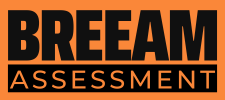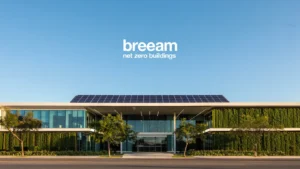In an era marked by escalating environmental concerns and the urgent need for sustainable development, the construction industry stands at a pivotal crossroads. With buildings accounting for a substantial portion of global energy consumption and greenhouse gas emissions, there’s an increasing demand for environmentally responsible construction practices. Enter BREEAM – the Building Research Establishment Environmental Assessment Method – a globally recognized framework designed to evaluate and enhance the sustainability performance of buildings.
Understanding BREEAM International Standards
BREEAM international standards are a reflection of the growing global awareness and urgency surrounding sustainability in the built environment. Initially developed in the UK by the Building Research Establishment (BRE) in the early 1990s, BREEAM has since expanded its reach to encompass projects around the world. The adaptation of BREEAM to international contexts underscores the need for a standardized framework that transcends geographical boundaries and addresses the unique environmental and socio-economic challenges faced by different regions.
One of the key strengths of BREEAM international standards lies in their flexibility and adaptability to diverse cultural, climatic, and regulatory contexts. Unlike prescriptive sustainability certification schemes, BREEAM offers a holistic and customizable approach to assessing and improving the environmental performance of buildings. By providing a common language and set of criteria, BREEAM facilitates the exchange of best practices and fosters collaboration among stakeholders worldwide.
BREEAM international standards cover a wide range of sustainability categories, including energy, water, materials, waste, pollution, and land use. Each category comprises specific criteria that address various aspects of sustainable design, construction, and operation. By evaluating these criteria, project teams can identify opportunities for improvement and implement strategies to enhance the overall sustainability performance of their buildings.
In addition to its focus on environmental sustainability, BREEAM international standards also prioritize social and economic considerations. This holistic approach recognizes the interconnectedness of environmental, social, and economic factors and seeks to promote sustainable development that benefits people, planet, and profit. By incorporating social and economic indicators into its assessment framework, BREEAM encourages project teams to consider the broader implications of their decisions and strive for outcomes that create value for society as a whole.
Overall, BREEAM international standards represent a significant milestone in the global sustainability movement, offering a robust framework for assessing and improving the environmental performance of buildings on a worldwide scale. By embracing BREEAM certification, project teams can demonstrate their commitment to sustainability leadership and contribute to the creation of a more resilient and sustainable built environment for future generations.
Benefits of Adopting BREEAM International Standards
The adoption of BREEAM international standards offers a wide range of benefits for UK-based businesses and organizations across the construction industry. Firstly, BREEAM certification enhances marketability and credibility, providing a clear signal to investors, tenants, and consumers that a building meets rigorous sustainability standards. In an increasingly competitive marketplace where sustainability is a key differentiator, BREEAM-certified buildings have a distinct advantage, commanding higher rental rates, occupancy levels, and property values.
Moreover, BREEAM certification can lead to significant cost savings over the lifecycle of a building. By optimizing energy and water efficiency, reducing waste and resource consumption, and enhancing indoor environmental quality, BREEAM-certified buildings can achieve lower operating costs and higher returns on investment. In addition to direct cost savings, BREEAM certification can also help mitigate risks associated with regulatory compliance, reputational damage, and obsolescence, thereby safeguarding long-term financial performance.
From a social perspective, BREEAM certification promotes occupant health, well-being, and productivity by creating environments that are comfortable, safe, and conducive to human flourishing. By prioritizing factors such as daylighting, indoor air quality, thermal comfort, and acoustic performance, BREEAM-certified buildings enhance the quality of life for occupants and foster a sense of community and belonging. This, in turn, can lead to higher employee satisfaction, retention, and productivity, as well as improved overall societal well-being.
Furthermore, BREEAM certification contributes to environmental sustainability by reducing the environmental footprint of buildings and mitigating their impact on the natural world. By incorporating sustainable design principles, utilizing renewable energy sources, and minimizing resource consumption and waste generation, BREEAM-certified buildings help mitigate climate change, protect biodiversity, and conserve natural resources for future generations. This environmental stewardship not only benefits the planet but also enhances the resilience and longevity of buildings in the face of evolving environmental challenges.
In summary, the benefits of adopting BREEAM international standards are manifold, encompassing economic, social, and environmental dimensions. By embracing BREEAM certification, UK-based businesses and organizations can unlock value, drive innovation, and demonstrate leadership in sustainability, positioning themselves for success in a rapidly changing world.
Navigating BREEAM Assessment Process
The BREEAM assessment process is a structured and systematic approach to evaluating the sustainability performance of buildings and guiding them towards certification. It comprises several stages, each of which is designed to assess different aspects of a building’s design, construction, and operation. Understanding and navigating the BREEAM assessment process is essential for project teams seeking to achieve BREEAM certification and unlock the benefits of sustainable building practices.
The first stage of the BREEAM assessment process is the scoping and appointment stage, during which the project team appoints a licensed BREEAM assessor and defines the scope of the assessment. This involves determining the target BREEAM rating, selecting the appropriate BREEAM scheme, and identifying key stakeholders and project requirements. Effective scoping and appointment are critical for ensuring that the assessment aligns with project goals and objectives from the outset.
Once the assessment scope has been defined, the next stage is the pre-assessment stage, where the project team conducts an initial review of the building design and identifies opportunities for sustainability improvement. This may involve conducting feasibility studies, evaluating design options, and identifying potential challenges or barriers to achieving BREEAM certification. By addressing sustainability considerations early in the design process, project teams can integrate sustainable design principles more effectively and optimize the building’s performance.
Following the pre-assessment stage, the project enters the assessment stage, where the licensed BREEAM assessor conducts a detailed evaluation of the building design and performance against the relevant BREEAM criteria. This involves gathering evidence, conducting site inspections, and verifying compliance with BREEAM requirements. The assessment covers various sustainability categories, including energy, water, materials, waste, pollution, and land use, each of which is evaluated based on specific criteria and performance metrics.
Throughout the assessment stage, effective communication and collaboration among project stakeholders are essential for addressing any challenges or issues that may arise and ensuring that the building meets the required BREEAM standards. Regular meetings, progress reports, and feedback loops can help facilitate coordination and decision-making, enabling project teams to stay on track and achieve their sustainability goals.
Once the assessment stage is complete, the project moves into the certification stage, where the BREEAM assessor submits the assessment report to BRE for review and certification. BRE evaluates the assessment report against the relevant BREEAM scheme and issues a final certification decision based on the building’s performance. Depending on the assessment outcome, the building may receive a BREEAM rating ranging from Pass to Outstanding, reflecting its level of sustainability achievement.
After achieving BREEAM certification, the final stage of the process is the post-construction stage, where the project team monitors and maintains the building’s sustainability performance over time. This involves tracking energy and water consumption, conducting periodic audits, and implementing corrective actions as needed to ensure ongoing compliance with BREEAM standards. By monitoring performance and addressing any deviations or deficiencies, project teams can sustain the building’s BREEAM certification and maximize its long-term value.
In summary, navigating the BREEAM assessment process requires careful planning, effective communication, and collaboration among project stakeholders. By understanding the stages of the process and following best practices for scoping, pre-assessment, assessment, certification, and post-construction, project teams can achieve BREEAM certification and unlock the benefits of sustainable building practices.
Implementing BREEAM International Standards in UK Construction Projects
Integrating BREEAM requirements into UK construction projects requires a strategic and proactive approach that aligns with project goals and objectives. From the early stages of project planning and design, sustainability considerations should be integrated into every decision-making process to maximize the building’s potential for achieving BREEAM certification and delivering long-term sustainability benefits.
One of the first steps in implementing BREEAM international standards is to appoint a licensed BREEAM assessor and define the scope of the assessment. The assessor plays a crucial role in guiding the project team through the assessment process, providing expertise and guidance on BREEAM requirements and best practices. By engaging the assessor early in the project lifecycle, project teams can ensure that sustainability considerations are integrated effectively into the design and construction phases.
During the design phase, project teams should focus on optimizing building performance across key sustainability categories, including energy, water, materials, waste, pollution, and land use. This may involve selecting energy-efficient building systems, incorporating renewable energy technologies, specifying sustainable materials and finishes, and implementing water-saving measures. By prioritizing sustainability from the outset, project teams can minimize the need for costly retrofits and maximize the building’s potential for achieving BREEAM certification.
Throughout the construction phase, effective project management and quality control are essential for ensuring compliance with BREEAM requirements and maintaining the integrity of sustainable design features. This may involve implementing construction best practices, conducting regular site inspections, and monitoring progress against sustainability targets. By fostering a culture of accountability and responsibility among contractors and subcontractors, project teams can minimize the risk of non-compliance and ensure that the building meets the necessary BREEAM standards.
After construction is complete, the focus shifts to post-construction activities, including commissioning, testing, and ongoing monitoring and maintenance. This involves verifying that sustainable design features are functioning as intended, conducting performance tests, and implementing preventive maintenance measures to sustain the building’s BREEAM certification over time. By investing in proactive maintenance and monitoring, project teams can optimize building performance, reduce operational costs, and enhance occupant comfort and satisfaction.
In addition to technical considerations, implementing BREEAM international standards requires a commitment to stakeholder engagement and collaboration. This may involve educating and training project teams, contractors, and occupants on sustainability best practices, fostering a culture of sustainability awareness and responsibility, and soliciting feedback and input from stakeholders throughout the project lifecycle. By building consensus and buy-in among stakeholders, project teams can ensure that sustainability objectives are effectively communicated and integrated into decision-making processes.
Overall, implementing BREEAM international standards in UK construction projects requires a holistic and integrated approach that encompasses technical, organizational, and cultural dimensions. By prioritizing sustainability from the outset, engaging stakeholders effectively, and maintaining a commitment to continuous improvement, project teams can achieve BREEAM certification and unlock the full potential of sustainable building practices.
Future Trends and Developments in BREEAM
As the sustainability landscape continues to evolve, BREEAM remains at the forefront of innovation, adapting to emerging trends and developments in the built environment. With advancements in technology, such as Building Information Modeling (BIM) and IoT-enabled building automation systems, BREEAM assessments are becoming more data-driven and sophisticated. These technological advancements enable more accurate and efficient assessment of building performance, facilitating informed decision-making and driving continuous improvement in sustainable design and construction practices.
Moreover, regulatory changes and global sustainability initiatives are shaping the evolution of BREEAM standards, driving the adoption of more ambitious sustainability targets and performance metrics. As governments around the world implement policies to mitigate climate change and promote sustainable development, BREEAM is responding by aligning its standards with international sustainability frameworks and best practices. This includes integrating principles of circular economy, resilience, and social equity into its assessment criteria, thereby expanding the scope of BREEAM certification to address emerging sustainability challenges.
Looking ahead, BREEAM-certified buildings are poised to play a pivotal role in advancing the transition towards a low-carbon, resilient built environment. By embracing innovation and staying ahead of the curve, BREEAM remains a trusted partner for businesses and organizations committed to sustainability excellence. By continuing to evolve and adapt to changing market demands and stakeholder expectations, BREEAM is driving positive change in the built environment and paving the way for a more sustainable and prosperous future.
In conclusion, BREEAM international standards represent a beacon of hope in the quest for sustainable development within the construction industry. By understanding and implementing BREEAM international standards, UK-based businesses and organizations can unlock value, drive innovation, and demonstrate leadership in sustainability. By embracing BREEAM certification, project teams can achieve their sustainability goals, enhance their competitive advantage, and contribute to the creation of a more resilient and sustainable built environment for future generations.
Ready to embark on your sustainability journey with BREEAM certification?
Explore our comprehensive range of consultancy services and resources to help you navigate the BREEAM assessment process and unlock the full potential of sustainable building practices. Contact us today to learn more and take the next step towards sustainability excellence.



